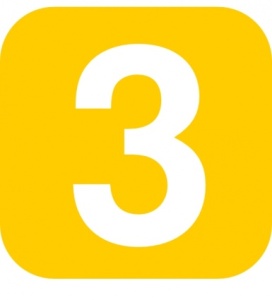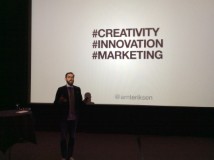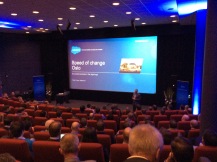It’s interesting to find the correlations between social media data and unexpected results during major elections. The power of the crowd is growing.
I found an amazing data whisperer, Stephens-Davidowitz aka @seththoughts on Twitter – a NY Times opinion writer and former Google Scientist. And he alerted me to the real scoop of yesterday’s New Hampshire caucus:
The interesting part is not the fact that one or the other candidate is trending – it is the timing and context that makes it so remarkable.
Kasich is really trending. People are clearly thinking about him at last minute. https://t.co/CLKI27wsip
— Stephens-Davidowitz (@seththoughts) February 9, 2016
People appeared to be considering John Kasich and investigating what he stands for, only when the first primary result in the little town of Dixville Notch showed Kasich beating Donald Trump 3-2. New Hampshire residents started googling him. A lot. Take a look:

If you click on the link to the Google Trends comparison @seththoughts prepared when he started to notice the correlations, there is a clear spike where Google Searches on John Kasich increased dramatically right after the reports of the surprise win in the first result came in. It happened between 7 pm and 8.30 pm.
This is INSANE. Goog Searches in NH pre-7pm
Trump: 30.0
Kasich: 17.9
Cruz: 14.9
Rubio:13.8
Bush:9.2
Christie:7.1
Fiorina:4.1
Carson:3.0— Stephens-Davidowitz (@seththoughts) February 10, 2016
Can you predict election results with social media?
Of course, it’s never straight forward. This interesting paper by a group of computer scientists at Wellesley College ON THE PREDICTABILITY OF THE U.S. ELECTIONS THROUGH SEARCH VOLUME ACTIVITY concludes that Google Trends was not a good predictor of the outcome of the 2008 and 2010 elections. But the limitation of only focusing on one parameter – in this case Google Searches out of context and time – was clear to them even then:
Nevertheless, if there is a widespread belief among the journalists that G-trends have such a predictive power, it may not be long before it becomes a self-fulfilling prophecy, influencing voters’ decisions: reassuring and exciting some, while discouraging others from voting in pursuit of a lost battle.
Perhaps that is what happened on the night, when John Kasich became a plausible contester (and perhaps by many an alternative they had been hoping for) when he won the first published result from the tiny town of Dixville Notch, New Hampshire over Donald Trump.
Make the data speak – listen and engage when it really matters
Opinion polls seem to have a strong influence on how politicians formulate their campaigns and whether or not they believe they can win.
But with social media, there is a source much more reliable than disturbing phone calls during family dinners.
What candidates might consider, is to steer away from listening only to news anchors and sponsored social media posts and to engage with the crowd itself. In Iowa, Bernie Sanders’ campaigners went door knocking – the next step is to transform the knowledge gained into actionable political strategy. Whether the knowledge is collected in door-to-door conversations or social media conversations is less important than how it is incorporated to keep it relevant and appealing on the day it happens.
Because as the example of New Hampshire has shown, it’s all about timing.
Pros and Cons from other research:
- Predicting Elections for multiple countries using Twitter and polls (IEEE Xplore Digital Library March 2015)
- Could social media forecast political movements? (The Oxford Internet Institute, 2015)
- ON THE PREDICTABILITY OF THE U.S. ELECTIONS THROUGH SEARCH VOLUME ACTIVITY, Wellesley College 2011
- “Claims that Twitter can predict the outcome of elections are riddled with flaws” (MIT Technology Review 2012)















